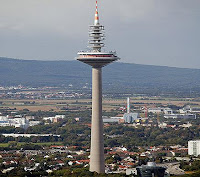The Juscelino Kubitschek Bridge also known as the President JK Bridge or just the JK Bridge, is a steel and concrete bridge that crosses Lake Paranoa in Brasilia in Brazil. It links the southern part of the lake, and St. Sebastian Paranoa the Pilot Plan or the central and original part of the city, through the Monumental Axis. The details of Juscelino Kubitschek Bridge is explained in world tour guides below.
 The bridge was inaugurated in December 15 of 2002, the structure of the bridge has a total length of crossing of 1,200 metres, a width of 24 meters with two carriage ways with three lanes in each direction, two walkways on the sides to use cyclists and pedestrian 1.5 meters width and length total span of 720 meters. It is named for Juscelino Kubitschek de Oliveira, former president of Brazil, who in the late 1950s decided to build Brasilia as the new capital of the country. It was designed by architect Alexandre Chan and structural engineer Mario Vila Verde.
The bridge was inaugurated in December 15 of 2002, the structure of the bridge has a total length of crossing of 1,200 metres, a width of 24 meters with two carriage ways with three lanes in each direction, two walkways on the sides to use cyclists and pedestrian 1.5 meters width and length total span of 720 meters. It is named for Juscelino Kubitschek de Oliveira, former president of Brazil, who in the late 1950s decided to build Brasilia as the new capital of the country. It was designed by architect Alexandre Chan and structural engineer Mario Vila Verde.The main span structure has four supporting pillars submerged under Lake Paranoa, and the deck weight is supported by three 200-foot-tall or 61 m asymmetrical steel arches that crisscross diagonally. The decks are suspended by steel cables alternating at each side of the deck, interlacing in some kind of twisted plane. The entire structure has a total length of 1,200 m, and it was completed at a cost of US$56.8 million R$160 million Brazilian Reais, current 2003. The bridge has a pedestrian walkway and is accessible to bicyclists and skaters.
Despite the structural design complexity and the higher cost of the chosen solution, these characteristics give the bridge a great architectonical beauty and grandiosity, up to the level of Brasilias majestic scale. Inaugurated on December 15, 2002, this bridge immediately became one more of Brasilias favorite landmarks, especially at night. Chan won the Gustav Lindenthal Medal for this project at the 2003 International Bridge Conference in Pittsburgh. This medal is awarded for a single, recent outstanding achievement showing harmony with the environment, aesthetic merit and successful community participation.

 This bridge was also awarded the Premio Abcem 2003 ABCEM Award Best Steel Work of the Year, Bridges and Highway Overpasses Category, granted by the Brazilian Metal Construction Association. The bridge architectural design seems similar to a pedestrian walkway in the Port of Nagoya Public Aquarium located at 35 05 25 N 136 52 47 E. However architectural design also included structure shapes and solutions that step away from that footbridge.
This bridge was also awarded the Premio Abcem 2003 ABCEM Award Best Steel Work of the Year, Bridges and Highway Overpasses Category, granted by the Brazilian Metal Construction Association. The bridge architectural design seems similar to a pedestrian walkway in the Port of Nagoya Public Aquarium located at 35 05 25 N 136 52 47 E. However architectural design also included structure shapes and solutions that step away from that footbridge.The main characteristics of the Juscelino Kubitschek Bridge structure are given in detail below in world tour guides. The Total length of the Juscelino Kubitschek Bridge is 1,200 m. Main span supported by the archs are 720 m. Deck Width is 24 m with three lanes in each direction. Lateral sideways for pedestrians and bicycles are 1.5 m on each side. The Rise of the bridge is 60 m. The Clearance of the bridge is18 m. The Arch span of the bridge is 3 x 240 m.






















































